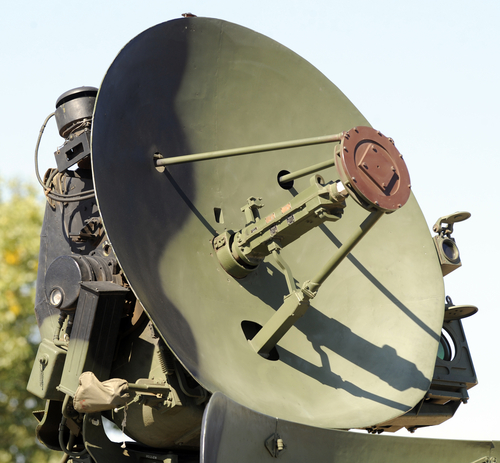Dielectrics are poor conductors of electricity and can be thought of as non-conductive materials or insulators. Dialectrical materials are an efficient supporter of electrostatic fields which can store energy. Most common uses of these materials are in capacitor, power transformer, cables, spark generators, transducers, and in the construction of radio-frequency transmission lines. In general, dielectric materials are solid such as porcelain (ceramic), mica, glass, plastics, and the oxides of various metals although some liquids and gases can serve as good dielectric materials. The characteristics of dielectrics make it essential for use in electronics. The dielectric resonator oscillator (DRO) is an excellent example of an application of dielectric materials.
Oscillators represent the basic energy source for all RF and microwave systems. A typical microwave oscillator consists of an active device (i.e. a diode or a transistor) and either a single passive frequency-determining resonant element or a resonant circuit with several circuit elements. The primary function of DROs is to control the frequency of the radio waves generated. Companion voltage controlled diodes are used in order to tune the DRO to different frequencies.
DROs such as those made by Synergy Microwave in Paterson, N.J. are used widely in electronic warfare, missile, radar and communication systems in both the military and commercial applications. DROs are preferred because they are known to have low phase noise, a stable frequency in an unstable temperature setting, compatibility with other circuit elements, a resistance to being susceptible to harsh surroundings and allowing for compact and simple build reproducibility. A dielectric resonator oscillator can operate in the tens of gigahertz frequency ranges and is usually made of ceramic material formed into a cylindrical shape. The DRO is considered as one of the most important microwave devices.
Dielectric Resonator Vs Resonant Metal Cavities
A resonator is a device which naturally oscillates at some frequency or frequencies at a greater amplitude than at others. The oscillations in a resonator can be either electromagnetic or mechanical. Resonators are used to either generate waves of specific frequencies or to enable the selection of specific frequencies from a signal.
A cavity resonator is one in which waves exist in a hollow space inside the cavity. Microwave cavities consisting of hollow metal boxes and are used in microwave transmitters, receivers and test equipment to control frequency. They are used in place of the tuned circuits which may have several elements and are used at lower frequencies.
One of the characteristics that distinguish dielectric resonators from resonant metal cavities is the presence or absence of magnetic and electric fields. In a resonant metal cavity there is zero magnetic and electric fields on the dielectric walls outside of the resonator
Tuning Techniques
Dielectric resonator oscillator tuning is done by changing the electromagnetic fields that are supported by the resonator. There are various non-mechanical ways to tune DROs namely with optical elements, varactor diodes, and ferrite elements. Varactor diode tuning seems to be the most efficient and practical way to tune DROs since the other two ways have known difficulties associated with them.
The DRO can possibly be tuned over a 10 percent frequency bandwidth by disturbing the resonator’s magnetic field, which is achieved by changing the air gap between the enclosure and the ceramic cylinder.
Phase Locked Loop DROs
Phase Locked Loop DROs are important when the phase noise factor is a crucial parameter. Phase noise is an oscillator parameter that has grown in importance with the complexity of modern communications modulation formats. Synergy Microwave Corp in Paterson N.J. has developed a line of compact surface-mount-device (SMD) DROs with extremely low phase noise levels at fundamental-frequency outputs through 20GHz and higher, suitable for use in commercial, industrial, and military applications.
Peninsula Technical Sales has expert technical knowledge of DROs and related product. Visit our web page or call us at 650-969-3636. We are always delighted to answer your questions.
Peninsula Technical Sales represents electronic equipment manufacturers and is proud to offer our services online and to the following cities and their surrounding areas: San Francisco, Santa Clara, San Jose, Fremont, Sacramento, Milpitas, and Santa Rosa.

